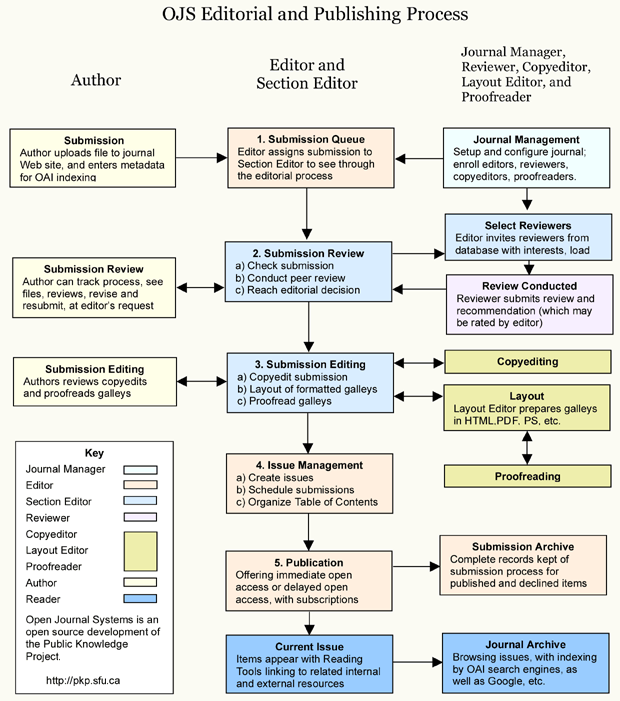About the Journal
History - Aims & Scope
JEMA: Jurnal Ilmiah Bidang Akuntansi dan Bisnis is a prestigious, peer-reviewed journal published twice a year by the University of Islam Malang. Addressing to management professionals, researchers, and scholars, JEMA is dedicated to rigorously exploring practices, concepts, and ideas in the field of business, accounting, and management. With a focus on delivering valuable managerial insights, the journal is presented in a reader-friendly format to foster widespread engagement and knowledge dissemination. Since its founding in 2007, JEMA has played a significant role in shaping the content and boundaries of the business recent issues. It has become a truly international journal where authors from Asia-Pacific publish their research work.
JEMA warmly welcomes manuscripts that offer innovative (novel) managerial insights in various core business functions. Submissions should adhere to high standards of rigor, supported by either empirical data or a well-justified theoretical model. Additionally, we value well-written and compelling presentations of research findings to ensure a meaningful impact on the academic and/or business practicioners.
The following are some suggested areas of interest in the field of business, accounting and management, where we encourage researchers and practitioners to delve into and contribute their valuable insights. These areas encompass financial accounting, managerial accounting, auditing, taxation, corporate finance, stock market-financial analysis, performance management, risk management, and corporate governance . In addition to the suggested areas of interest in accounting and finance, we also encourage research and contributions in the diverse fields of marketing, human resources, management information systems, and operations . By embracing these areas of interest, we strive to enrich the understanding of contemporary business practices and contribute to the advancement of the academic.
Journal Indexing & Metrics
JEMA: Jurnal Ilmiah Bidang Akuntansi dan Bisnis is abstracted and indexed by various leading databases and platforms such as Garba Rujukan Digital (Garuda), Scientific and Technology Index (Sinta), Directory of Open Access Journal (DOAJ), Crossref, and Dimensions. These prestigious indexing services enhance the journal's global reach and make it easily discoverable by researchers, academics, and practitioners worldwide.
Scopus is a comprehensive abstract and citation database of peer-reviewed literature: scientific journals, books, and conference proceedings. Delivering a comprehensive overview of the world's research output in the fields of science, technology, medicine, social sciences, and arts and humanities, Scopus features smart tools to track, analyze, and visualize research. Developed and managed by Elsevier, it provides users with a robust research platform to find relevant and authoritative research, identify experts, and access reliable data, metrics, and analytical tools for assessing research performance and trends in science. Scopus is widely used by academics, researchers, and institutions around the globe to support their research needs and enhance their understanding of specific disciplines or broader scientific questions. As of the last access in March 03, 2024, the total cited documents of Jema: Jurnal Ilmiah Bidang Akuntansi dan Manajemen in the Scopus database has a total of 30 documents published, with an total number of citations reaching approximately 57, showcasing the significant impact and contribution of our journal to the academic and research community. Click more info for detailed information.
The Directory of Open Access Journals (DOAJ) is an online directory that indexes and provides access to high-quality, open access, peer-reviewed journals. It covers all subjects and languages, offering a comprehensive resource for finding open access scholarly articles and journals. DOAJ aims to increase the visibility and ease of use of open access scientific and scholarly journals, thereby promoting their increased usage and impact. As of March 3, 2024, the DOAJ has indexed a total of 90 manuscripts of Jema: Jurnal Ilmiah Bidang Akuntansi dan Manajemen. Click more info for detailed information.
Dimensions is a modern and innovative research information platform provided by Digital Science. It integrates data on publications, grants, patents, and clinical trials, making it easier for researchers, institutions, and policymakers to explore the connections between different pieces of research and to measure their impact. Dimensions offers a comprehensive view of the research landscape, supporting a variety of analytics and discovery tasks across science and research. As of March 3, 2024, Dimensions has indexed a total of 90 manuscripts of Jema: Jurnal Ilmiah Bidang Akuntansi dan Manajemen and recorded over 231 citations. Click more info for detailed information.
Sinta (Science and Technology Index) is an Indonesian index that evaluates and ranks the quality of journals and research outputs in the fields of science and technology. Managed by the Ministry of Research, Technology, and Higher Education of Indonesia, Sinta provides tools for assessing the performance of researchers, journals, institutions, and research groups within Indonesia. It aims to increase the visibility of Indonesian research and foster a competitive research environment by promoting high-quality scholarly publications. As of March 3, 2024, Sinta has indexed a total of 90 manuscripts of Jema: Jurnal Ilmiah Bidang Akuntansi dan Manajemen, with the research documents garnering over 831 citations. Click more info for detailed information.
REVIEW & DECISION PROCESS
Each submission is checked by the editor. At this stage, they may choose to decline or unsubmit your manuscript if it doesn’t fit the journal aims and scope, or they feel the language/manuscript quality is too low.
If they think it might be suitable for the publication, they will send it to at least two independent referees for double blind peer review. Once these reviewers have provided their feedback, The editor has full authority to make one of the following decisions upon received reviewers, publish as is , conditionally accept with minor revisions (editor will check) , conditionally accept with necessary changes as recommended by reviewer , or the article should be thoroughly changed (rejection).

REVIEWER RESPONSIBILITIES
Contribution to Editorial Decisions
Peer review assists the editor in making editorial decisions and through the editorial communications with the author may also assist the author in improving the paper.
Promptness
impossible should notify the editor and excuse himself from the review process.
Confidentiality
Any manuscripts received for review must be treated as confidential documents. They must not be shown to or discussed with others except as authorized by the editor.
Standards of Objectivity
Reviews should be conducted objectively. Personal criticism of the author is inappropriate. Referees should express their views clearly with supporting arguments.
Acknowledgement of Sources
Reviewers should identify relevant published work that has not been cited by the authors. Any statement that an observation, derivation, or argument had been previously reported should be accompanied by the relevant citation.
Disclosure and Conflict of Interest
Privileged information or ideas obtained through peer review must be kept confidential and not used for personal advantage. Reviewers should not consider manuscripts in which they have conflicts of interest resulting from competitive, collaborative, or other relationships or connections with any of the authors, companies, or institutions connected to the papers.
Related to COPE Reviewer Guidance:
Reviewer suspected to have appropriated an author’s ideas or data
Peer review manipulation suspected during publication
Peer review manipulation suspected after publication
REVIEWER GUIDELINES
Peer reviewer is responsible in evaluating the article submitted in the field of expertise, then giving constructive advice and honest feedback to the author regarding the article submitted.
Before reviewing, please note the following; only review article that meet your expertise , notify the due date of the review process , no conflict of interests , and please remind authors to follow our author guidelines (manuscript template) precisely .
When reviewing the article, please consider the following guidelines:
Title: is it clearly illustrating the article?
Abstract: is it well writen and having ability to making good impression (stand-alone)?
Reviewer should evaluate whether the introduction already describe the importance and the uniqueness of the topic or not. Authors should provide background material and stated the problem or question, and tell the reader the purpose of your study. Usually, the reason is to fill a gap in the knowledge or to answer a previously unanswered question.
If the study had been previously done by other authors, it is still eligible for publication?
Is the article is fairly new, fairly deep, and interesting to be published?
Literature review investigates the gap that will be exposed and solved. The flow of all the ideas are required to be clear, linked, well-crafted and well developed. It serves as the source of the research question and especially the base or the hypotheses that respond to the research objective.
Does the author accurately describe how the data is collected?
Is the theoretical basis or reference used appropriate for this study?
Is the exposure design suitable for the answer to the question?
Is there a decent enough information for you to imitate the research?
Does the article identify following procedures?
Are there any new methods? If there is a new method, does the author explain it in details?
Is there any appropriate sampling?
Have the tools and materials used been adequately explained?
Does the article exposure describe what type of data is recorded; right in describing the measurement?
The results of article should be clear with the appropiate analysis and statistical tools. Reviewer should ensure that results are presented in a logical order, do not contained duplicate data among figures, tables, and text (or re-state much of the data from a table in the text of the manuscript), and Include the results of statistical analyses in the text, usually by providing p values wherever statistically significant differences are described.
The conclusion should answer/explain the research problem
Consistency in result, discussion, and conclusion
Authors should mention and explain any inconclusive result
Authors should compare the research results with other previous ones
Authors should explain the uniqueness or the contradict reason (if any) with other previous ones
The conclusion should explain how a better scientific research to be followed-up
Authors should describe the limitations and suggest future studies that need to be carried out
Are there any elements of plagiarism of this paper field?
Does it contribute to knowledge?
Does the article adhere to the standards of the journal?
Is the article in line with the objectives and scope of the journal?
Reviewer should ask researcher about their research topic/content by using the OJS system. Once reviewer have completed their research evaluation, reviewer has obligation to fill out the JEMA Reviewer Form (Mandatory) and JEMA Reviewer Comment (Mandatory) . Thus, editor has full authority to make decisions upon received reviewers comments.
Copyright & License

This journal provides immediate open access to its content on the principle that making research freely available to the public supports a greater global exchange of knowledge. However, works/articles in this journals as are bound to Creative Commons Attribution 4.0 International License .
Upon acceptance, all authors receive a licensing form. Please ensure its accuracy, including up-to-date contact details, correct spelling of authors' names, and affiliation information. Once reviewed, kindly return the JEMA Author Information, JEMA Author Contribution, and JEMA Copyright Transfer Agreement forms to us. If, for any reason, authors are unable to assign copyright to us, we encourage them to discuss this matter with their respective journal content editor.
Plagiarism Policy

Plagiarism detection is a widespread challenge that transcends individual journals and publishers, necessitating a collaborative approach across the publishing industry. To address this, Crossref and the STM publishing community introduced the Crossref Similarity Check in 2008, a tool designed to help editors confirm the originality of submitted manuscripts. This service leverages the iThenticate software by iParadigms, also known for creating Turnitin, to scan articles for similar content. For more detailed information on the types of plagiarism and how they are identified, click this link.
JEMA: Jurnal Ilmiah Bidang Akuntansi dan Manajemen utilizes the iThenticate software to review all submissions, producing a similarity report that details the extent of text overlap between the submitted article and existing published works. Instances of overlap are closely examined for potential plagiarism in line with the journal's editorial guidelines. A manuscript may be eligible for consideration if it has an overall similarity score of 20% or less. However, this initial score is subject to additional scrutiny, focusing on specific criteria to ensure compliance with the standards of originality and integrity set by the journal.
In the process of plagiarism detection, a meticulous strategy is employed to ensure thoroughness, particularly through the use of the Content Tracking mode in the iThenticate software, defined here as Low Text Similarity. This approach is adept at identifying manuscripts that, while having a low overall similarity percentage, might contain segments that closely resemble material from a singular source. A specific threshold has been established where if the similarity from any one source exceeds 5%, the manuscript is required to be revised by the author for proper attribution and paraphrasing. Furthermore, a manuscript might still be considered plagiarized if it comprises a patchwork of content from multiple sources, despite having a low overall similarity score. This policy underscores the critical importance of maintaining originality throughout the manuscript, ensuring that all content is genuinely reflective of the author's work and properly cited.
In certain cases, a manuscript might show a low overall similarity score but have a significant portion of text—up to 15%—matching a single existing article. This situation exceeds the allowable limit for text similarity from one source (we classified it as High Text Similiarity). Authors of such manuscripts are encouraged to carefully revise the text to decrease the similarity, ensuring they properly acknowledge the original source. This step is crucial for avoiding issues of plagiarism and copyright infringement, maintaining the integrity of scholarly publishing.
Archiving

This journal utilizes the LOCKSS system to create a distributed archiving system among participating libraries and permits those libraries to create permanent archives of the journal for purposes of preservation and restoration. More...














